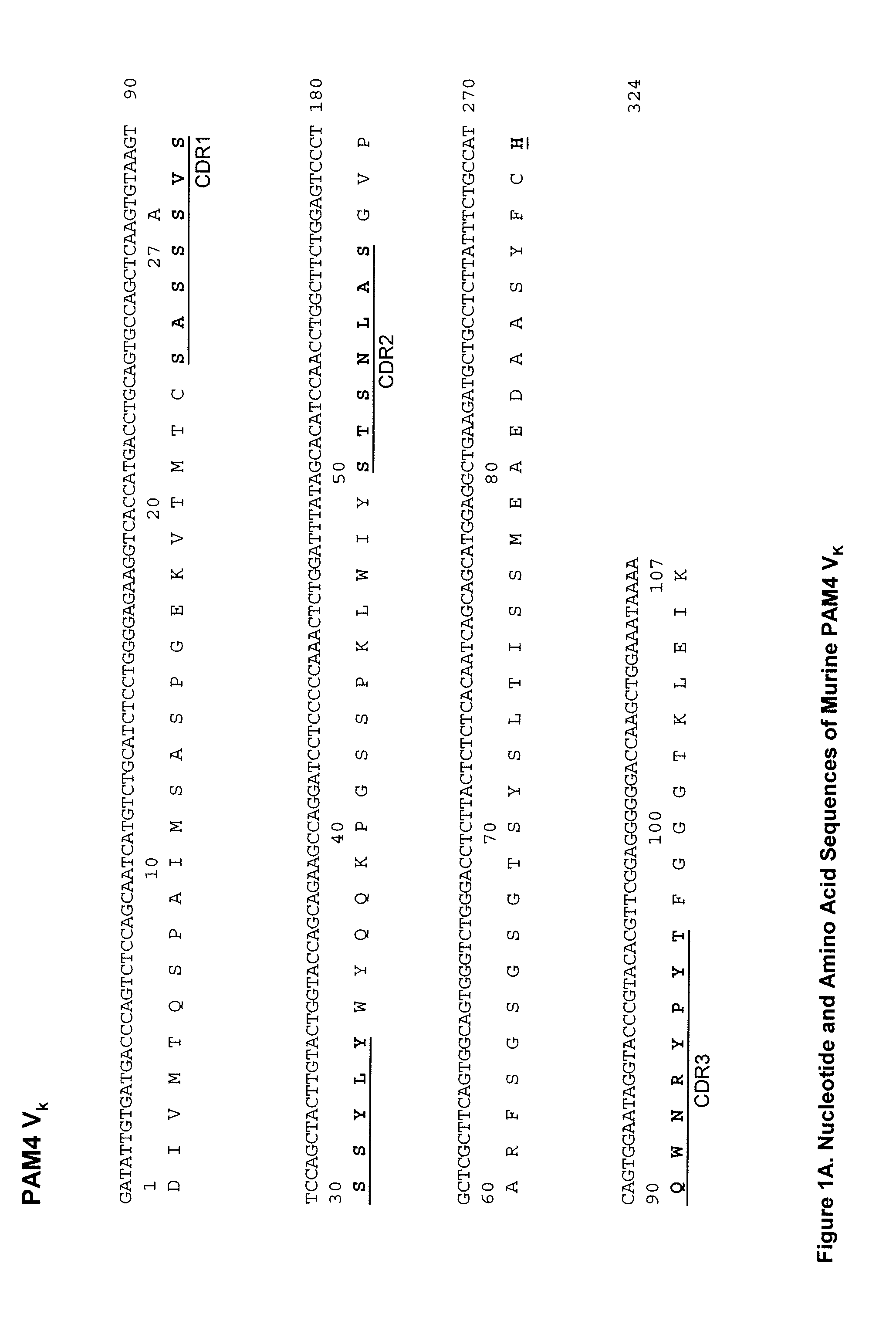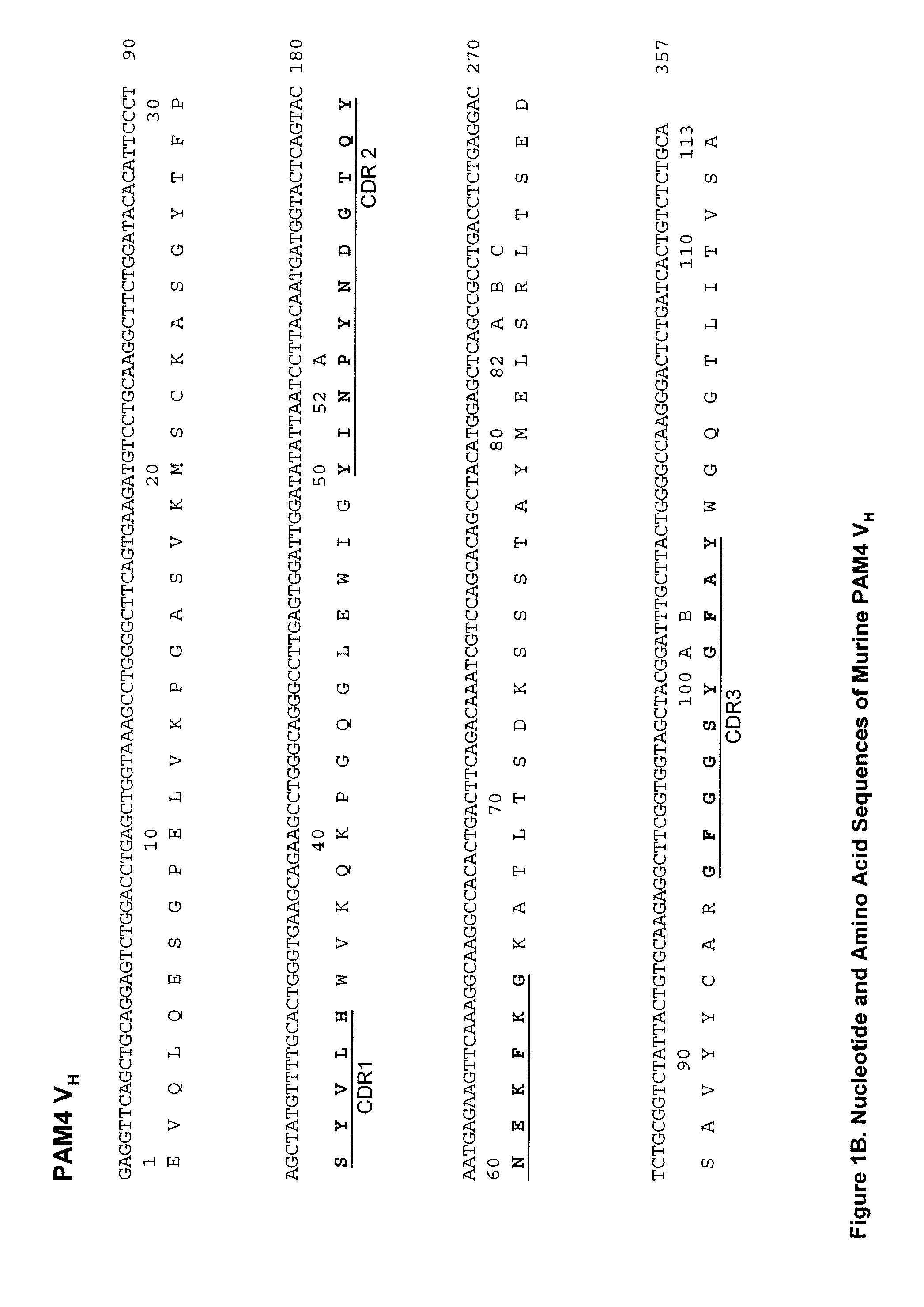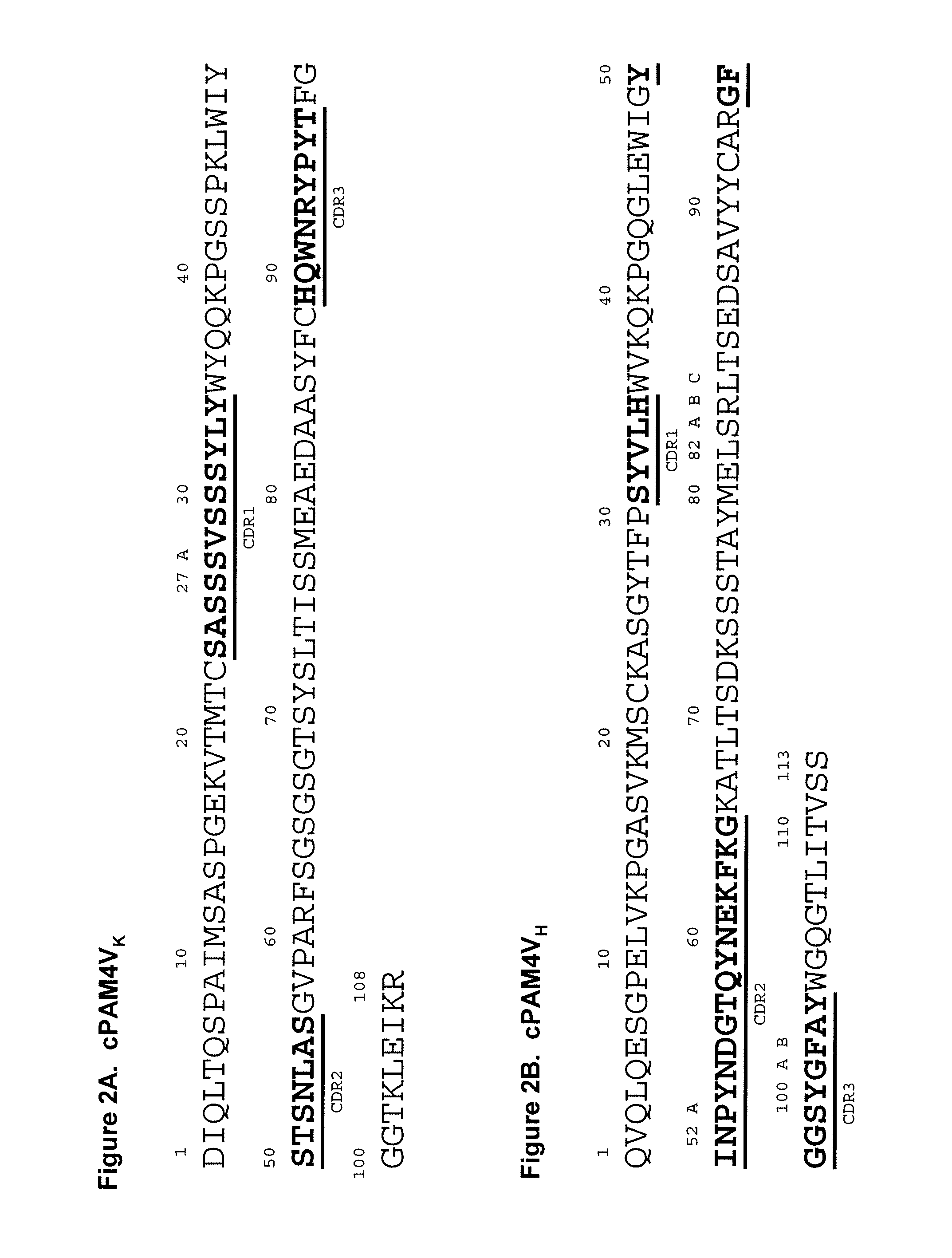Anti-mucin antibodies for early detection and treatment of pancreatic cancer
a pancreatic cancer and anti-mucin technology, applied in the field of anti-mucin antibodies for can solve the problems of unacceptably high mortality rate of 78% for localized disease, and unfavorable early detection and treatment of pancreatic cancer. achieve high specificity and sensitivity
- Summary
- Abstract
- Description
- Claims
- Application Information
AI Technical Summary
Benefits of technology
Problems solved by technology
Method used
Image
Examples
example 1
Humanized PAM4 MAb
[0229]In preferred embodiments, the claimed methods and compositions utilize the antibody hPAM4 which is a humanized IgG of the murine PAM4 MAb raised against pancreatic cancer mucin. Humanization of the murine PAM4 sequences was utilized to reduce the human antimouse antibody (HAMA) response. To produce the humanized PAM4, murine complementarity determining regions (CDR) were transferred from heavy and light variable chains of the mouse immunoglobulin into human framework region (FR) antibody sequences, followed by the replacement of some human FR residues with their murine counterparts. Humanized monoclonal antibodies are suitable for use in in vitro and in vivo diagnostic and therapeutic methods.
[0230]Comparison of the variable region framework sequences of the murine PAM4 MAb (FIGS. 1A and 1B) to known human antibodies in the Kabat database showed that the FRs of PAM4 VK and VH exhibited the highest degree of sequence homology to that of the human antibodies Wa...
example 2
Immunohistochemistry Staining Studies
[0249]Immunohistochemistry on normal adult tissues showed that the PAM4 reactive epitope was restricted to the gastrointestinal tract where staining was weak, yet positive (Table 2). Normal pancreatic tissue, including ducts, ductules, acini, and islet cells, were negative for staining. A PAM4 based enzyme immunoassay with tissue homogenates as antigens generally supported the immunohistology data (Table 3). The PAM4 epitope was absent from normal pancreas and other non-gastrointestinal tissues. In neoplastic tissues, PAM4 was reactive with twenty one out of twenty five (85%) pancreatic cancers (Table 4 and Table 5) and ten out of twenty six colon cancers, but only limited reactivity with tumors of the stomach, lung, breast, ovary, prostate, liver or kidney (Table 5). PAM4 reactivity appeared to correlate with the stage of tumor differentiation, with a greater percentage of staining observed in well differentiated pancreatic cancers than in moder...
example 3
In Vivo Biodistribution and Tumor Targeting of Radiolabeled PAM4
[0255]Initial biodistribution studies of PAM4 were carried out in a series of four different xenografted human pancreatic tumors covering the range of expected differentiation. Each of the four tumor lines employed, AsPc1, BxPc3, Hs766T and CaPan1, exhibited concentrations of 131I-PAM4 within the tumors (range: 21%-48% ID / g on day three) that were significantly (P<0.01-0.001) higher than concomitantly administered nonspecific, isotype-matched Ag8 antibody (range: 3.6%-9.3% Dig on day three). The biodistribution data were used to estimate potential radiation doses to the tumor of 12,230; 10,684; 6,835; and 15,843 cGy / mCi of injected dose to AsPc1, BxPc3, Hs766T and CaPan1, respectively. With an actual maximum tolerated dose (MTD) of 0.7 mCi, PAM4 could provide substantial rad dose to each of the xenografted tumor models. In each tumor line the blood levels of radiolabeled PAM4 were significantly (P<0.01-0.001) lower than...
PUM
| Property | Measurement | Unit |
|---|---|---|
| flow rate | aaaaa | aaaaa |
| concentration | aaaaa | aaaaa |
| decay energy | aaaaa | aaaaa |
Abstract
Description
Claims
Application Information
 Login to View More
Login to View More - R&D
- Intellectual Property
- Life Sciences
- Materials
- Tech Scout
- Unparalleled Data Quality
- Higher Quality Content
- 60% Fewer Hallucinations
Browse by: Latest US Patents, China's latest patents, Technical Efficacy Thesaurus, Application Domain, Technology Topic, Popular Technical Reports.
© 2025 PatSnap. All rights reserved.Legal|Privacy policy|Modern Slavery Act Transparency Statement|Sitemap|About US| Contact US: help@patsnap.com



